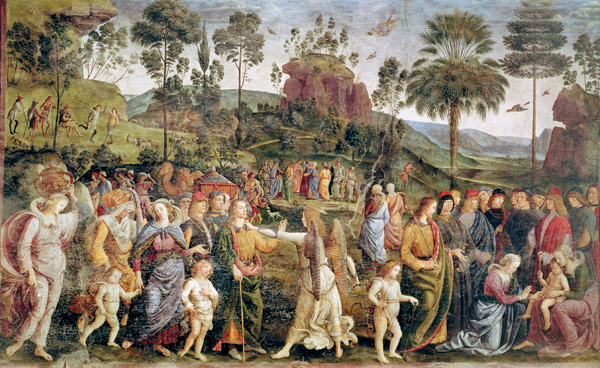Image Details

Giraudon
An angel halts Moses (front center) and his family on their way into Egypt, where Moses will liberate the Israelites, in this late-15th-century fresco painted on the wall of the Sistine Chapel by the Italian Pietro Perugino. They are allowed to pass only after Moses’ wife Zipporah circumcises their son (right scene). The biblical episode is even stranger and more ambiguous than the artist has shown. According to Exodus 4, Zipporah touches something bloody, perhaps the foreskin, to someone’s—apparently Moses’—“feet” (a euphemism for genitals—not shown!), saying: “You are a bridegroom of bloodiness for me” (Exodus 4:25). The text may be suggesting that by circumcising the son, Zipporah is righting the sin of the father, who was uncircumcised. The story may also reflect the possibility that in Israel, circumcision was originally not performed on infants but may have been, as in other cultures, a rite of passage into adulthood, preparatory to marriage. As Zipporah suggests, the ritual cutting turns a man into a “bridegroom,” ready for procreation.
